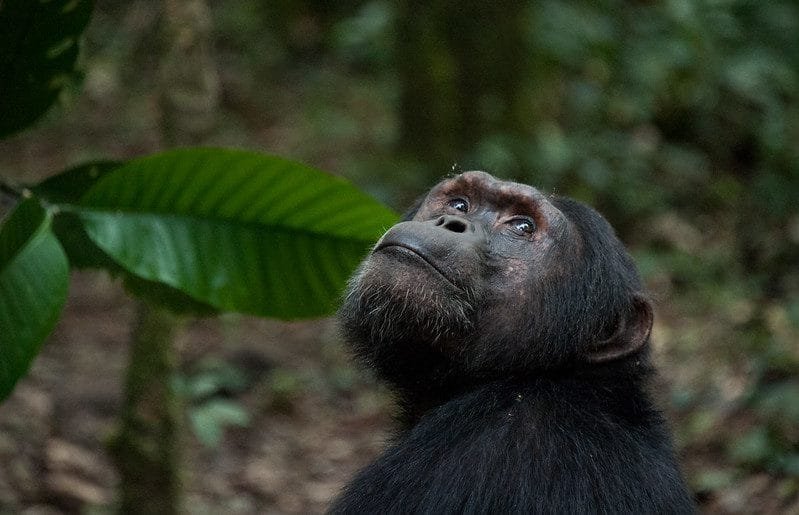
INTERNATIONAL
info@allinafricasafaris.com
INTERNATIONAL, 24/7 Help Support
USA/CANADA | M-F 9:00 am - 5:00 pm

Top activities to do in Kibale forest national park.: Known as the primate capital, Kibale Forest National Park is situated in Kabarole region in western Uganda. Chimpanzees, grey-cheeked mangabeys, black and white colobus monkeys, red-tailed monkeys, l’hoest monkeys, blue monkeys, olive baboons, bush elephants, antelopes, and more than 375 bird species are among the 13 primate species that call the 321 square kilometer national park home. During your safari, you can partake in a variety of fascinating activities at Kibale Forest National Park, such as
Chimpanzee trekking
One of the most popular tourist attractions in Kibale Forest National Park is chimpanzee trekking. In Kibale Forest National Park, chimpanzee trekking begins very early in the morning with a training on the guidelines to be followed.
Following the briefing, you will be split up into groups of six, each of which will be paired with an expert park guide who is familiar with the forest’s routes and a habituated chimpanzee family to travel with. Because chimpanzees prefer to roam around in search of food, hiking with them in Kibale Forest National Park might take anything from thirty minutes to four hours, depending on their location.
You will be able to see several bird species, plant and tree species, and other primate species while walking. Once the chimpanzees have been located, you will be able to spend an hour with them in their natural environment, where you can observe how they feed, nurse, play, relax, hunt, and fight, as well as take photos and films to share with people back home.
Another popular attraction in Kibale Forest National Park that draws tourists is the opportunity to see chimpanzee habituation. The practice of training wild chimpanzees to become accustomed to human presence for trekking is known as “chimpanzee habituation.” A group of researchers, park rangers, park guides, and chimpanzee medics work together to complete the habituation process, which takes two to three years.
A maximum of four individuals are permitted for the chimpanzee habituation experience, which begins at 6:30 am with a briefing on the guidelines to be followed while hiking. Following the briefing, you will begin hiking through the forest in search of the chimpanzees. Once you have located them, you will be able to spend four hours with them, during which you will be able to observe them feeding, patrolling, copulating, nursing, hunting, resting, constructing new nests, taking pictures, and documenting the wonderful moments.
One of the greatest places in Uganda to observe birds is Kibale Forest National Park, which is home to over 375 species of recorded birds, including migratory, forest, and Albertine Rift endemics. The Black-crowned Tchagra, African-pied Wagtail, Black bee-eater, African Green-pigeon, Black-capped Waxbill, Black-faced Rufous Warbler, African Wood Owl, Cameroon Somber Greenbul, Brown Illadopsis, and Green-breasted Pitta are just a few of the bird species that can be seen during bird watching in Kibale Forest National Park.
Among them are the following: Barn Swallow, Black-throated Apalis, Black-throated Roller, Zebra Waxbill, Blue-throated Brown Sunbird, Brown-eared Woodpecker, Black-billed Turaco, Bronze Manikin, Bush-shrike, Cassin’s Spinetail, Nahan’s Francolin, Masked Apalis, Blue Breasted Kingfisher, Chubb’s Cisticola, African Jacana, African Pitta, Crowned Eagle, Papyrus Gonolek, White Collared Olive, and Papyrus Canary.
An armed park ranger and an experienced park guide accompany guests on their nature walk, an exciting activity in Kibale Forest National Park that allows them to explore the tropical rainforests on foot. Both day guided nature walks and nocturnal nature walks—where you explore the park at night with spotlight torches—are available in Kibale Forest National Park. Beautiful butterflies, many bird species, plant and tree species, and mammals like duikers, forest hogs, and forest elephants are all on display throughout the day’s guided nature walk.
An armed park guide with spotlight torches will accompany you on the night nature walk, which begins at approximately 7:30 p.m. following dinner. This will allow you to clearly see nocturnal wildlife such as nightjars, tree hyraxes, pottas, bush babies, serval cats, crickets, and civets, among others.
Although it is possible to visit Kibale Forest National Park at any time of year, the ideal time to go is in the dry season, which runs from June to February. In contrast to the rainy season, when the chimpanzee trekking paths are muddy and slippery, making walking challenging, this time of year sees less or no rainfall in the park, meaning that the nature walk and chimpanzee trekking trails will be dry and manageable.
During your bird-watching safari, you can stay at any of the several lodging options in Kibale Forest National Park. Primate lodge, Kibale forest camp, Kibale forest lodge, Rwenzori guest house, Nyankuruba nature reserve and community campsite, Isunga lodge, Rweteera safari park, Chimps nest lodge, Crater safari lodge, Mountains of the Moon hotel, Chimpundu lodge, Kyaninga lodge, Aramaga rift valley lodge, Ataco country resort, Kibale safari lodge, Papaya Lake Lodge, Ndali lodge, and Turaco treetops are just a few of the lodging options that range from affordable to luxurious.
The western region of Uganda is home to Kibale Forest National Park, which is reachable by road. It takes roughly six to seven hours to drive from Kampala to the park headquarters via Mubende and Fort Portal.
Booking scheduled or charter flights from Entebbe International Airport or Kajjansi Airfield to Kasese or Semuliki Airstrip and then connecting to the park headquarters via car is another way to get to Kibale Forest National Park.






